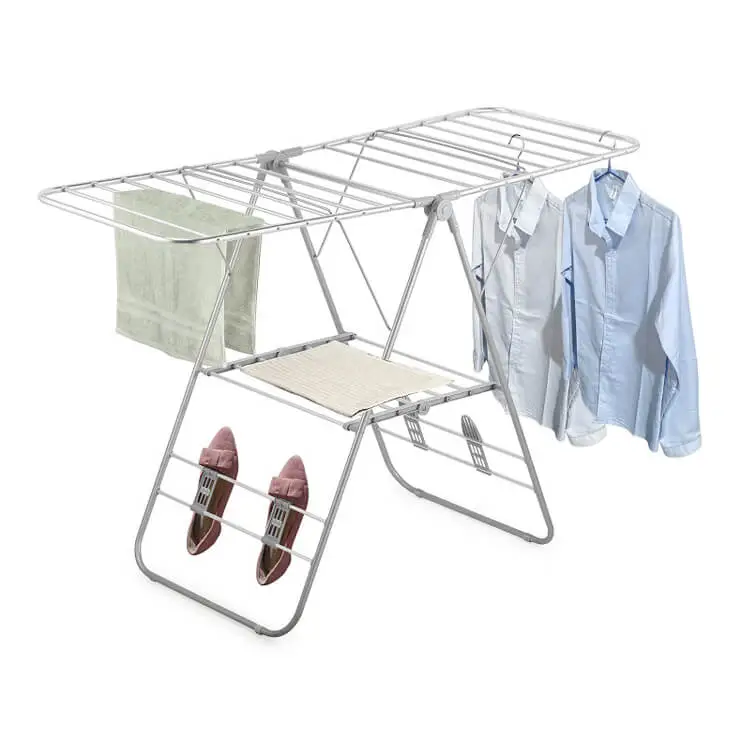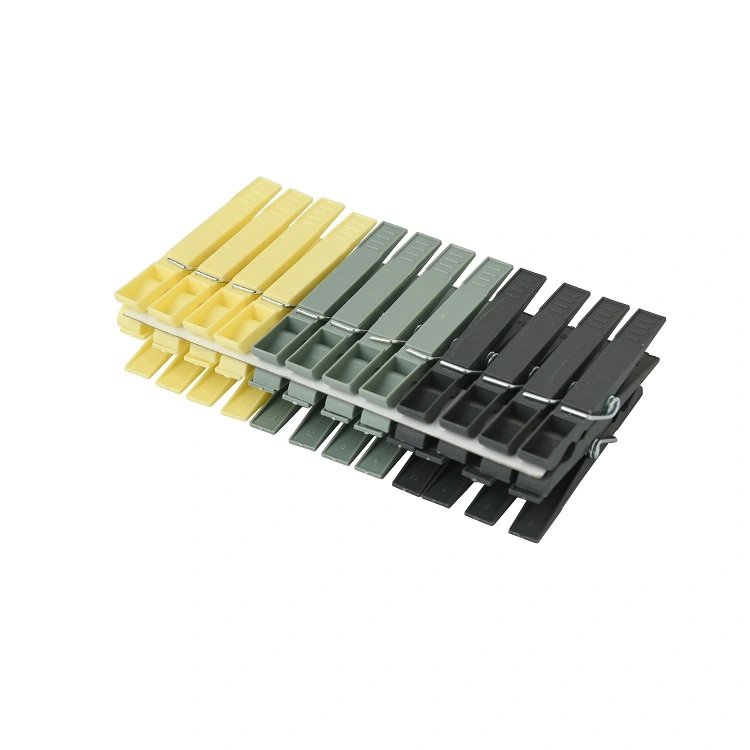Flat drying is a delicate and effective method for drying clothes that preserves their shape and quality. Unlike traditional drying methods like tumble drying, which can cause stretching or distortion, flat drying involves laying garments flat on a surface to air dry naturally. This technique is particularly beneficial for delicate fabrics like wool, cashmere, and synthetics, ensuring they maintain their original fit and appearance after washing. In this article, we'll delve into what flat dry means, how to implement it in your laundry routine, and explore various air drying tools that facilitate this process.
Flat drying is a method of drying delicate garments that involves laying them flat on a surface, rather than hanging them or using a tumble dryer. This technique helps maintain the shape, texture, and integrity of the fabric, preventing stretching, shrinking, or distortion that can occur with other drying methods.
Flat drying is particularly important for items made from materials such as wool, cashmere, and certain synthetic blends, which can lose their shape when hung while wet. To flat dry, a garment is usually placed on a clean, dry, and absorbent surface such as a mesh drying rack or a towel. Air circulates around the fabric, promoting even drying without causing damage.
This method is ideal for sweaters, knitwear, and other delicate clothing items, ensuring they retain their original fit and appearance after washing.
To flat dry your clothes, start by gently pressing out excess water from the freshly washed garment without wringing it, as twisting can cause distortion. Next, choose a clean, flat surface such as a mesh drying rack, drying mat, or a large towel spread out on a flat area. Lay the garment flat, ensuring it is in its natural shape, and smooth out any wrinkles or folds. Adjust parts like sleeves, collars, and hems to make sure they dry evenly.
How long does it take for clothes to air dry? Periodically flip the garment to promote even drying and prevent damp spots that could lead to mildew or odors. This process may take several hours to a full day, depending on the fabric and environmental conditions like humidity and airflow. By using a mesh drying rack, which allows air to circulate from all sides, or a drying mat designed to absorb moisture, you can speed up the drying process while protecting the garment's shape. This method is ideal for maintaining the quality and longevity of your delicate clothes, ensuring they look and feel great wear after wear.
Drying clothes flat is crucial for maintaining the shape and quality of delicate garments. Utilizing air drying products can make this process more efficient and effective. Here are several recommended products to help you dry your clothes flat.
A portable drying rack is a practical and versatile solution for air-drying clothes, especially delicate garments that require flat drying. This type of rack typically features a collapsible design, making it easy to set up and store when not in use. Portable drying racks come in various sizes and configurations, but they all provide a flat surface for laying out clothes to dry evenly.
Portable drying racks, such as cross-wing clothes airer, offer several benefits, including space-saving convenience, efficient drying, and versatility. They are ideal for apartments, dormitories, or homes with limited space, as they can be easily folded and stored away when not needed. These racks allow air to circulate around the clothes, promoting faster drying while preventing mildew and odors. Additionally, they are suitable for drying a wide range of garments, including sweaters, shirts, pants, and more.
Whether you need to dry clothes indoors during inclement weather or outdoors on a sunny day, a portable drying rack provides a convenient and reliable solution. With its compact and lightweight design, it's perfect for use in any living space or when traveling.

A multi-tier drying rack, like foldable 3-tier clothes airer, is a versatile and efficient solution for air-drying clothes, offering multiple levels of drying space in a single unit. This type of rack typically features two or more tiers with mesh or slatted surfaces, allowing for optimal air circulation around the garments. Multi-tier drying racks are designed to accommodate a variety of clothing items, from delicate garments like sweaters and lingerie to larger items such as towels and linens. The tiered design maximizes drying capacity while minimizing the footprint, making it ideal for homes with limited space. With sturdy construction and adjustable tiers, these racks offer stability and flexibility, allowing you to customize the drying setup to suit your needs. Whether you're air-drying laundry indoors or outdoors, a multi-tier drying rack provides an efficient and convenient solution for drying clothes while preserving their quality and shape.
Aside from traditional methods like using a clothes dryer or air drying on racks, there are other effective ways to dry clothes that are both eco-friendly and budget-friendly. Two popular alternatives are using clothes pegs and clotheslines.
Clothes pegs, also known as clothespins, are simple yet effective tools for drying clothes outdoors. Made from wood, plastic, or metal, laundry pegs securely attach wet laundry to a clothesline, preventing them from blowing away in the wind. Using clothes pegs allows for efficient air circulation around the garments, facilitating faster drying. Additionally, they are reusable and durable, making them a sustainable option for hanging laundry. Clothes pegs come in various designs and sizes, including traditional spring-loaded pegs and modern clamp-style pegs. They can be easily clipped onto a clothesline or drying rack and removed once the laundry is dry.

Clotheslines are long ropes or wires stretched between two points, such as poles, trees, or a wall-mounted clothesline. They provide a convenient and cost-effective way to air dry clothes outdoors, harnessing the natural heat and airflow of the sun and wind. Clotheslines come in different types, including retractable, rotary, and umbrella-style lines, offering flexibility and convenience for various living spaces. Hanging clothes on a clothesline allows them to dry quickly and naturally, while also reducing energy consumption compared to using a clothes dryer. Washing line for sale is suitable for drying all types of garments, from clothing and linens to towels and bedding. They are also environmentally friendly, producing zero carbon emissions and reducing reliance on electricity.
Tumble drying involves placing wet clothes in a machine called a tumble dryer, which circulates hot air to evaporate moisture from the fabric. The dryer uses a rotating drum to tumble the clothes continuously while heated air is blown through them. Tumble drying is a fast and convenient way to dry clothes, particularly in areas where air drying is impractical or during inclement weather. However, it can be harsh on fabrics, causing shrinkage, fading, and wear over time. Tumble drying also consumes energy, contributing to utility costs and environmental impact.
Air drying, on the other hand, involves hanging wet clothes on a clothesline, drying rack, or other flat surface to dry naturally with the aid of air circulation. This method relies on ambient air temperature and movement to evaporate moisture from the fabric. Air drying is a gentle and energy-efficient way to dry clothes, as it avoids the heat and mechanical agitation associated with tumble drying. It is suitable for most types of fabrics, particularly delicate items that may be damaged by the heat of a dryer. Air drying also helps to prolong the life of clothes and reduce energy consumption and utility costs.
| Criteria | Tumble Drying | Air Drying |
| Process | Uses a machine (tumble dryer) with heated air and a rotating drum to evaporate moisture from clothes | Involves hanging clothes on a line or rack to dry naturally with the aid of air circulation |
| Speed | Fast drying time | Slower drying time, especially in humid or cold conditions |
| Fabric Care | Can cause shrinkage, fading, and wear over time | Gentle on fabrics, reduces the risk of damage and extends the lifespan of clothes |
| Energy Consumption | Consumes more energy | Energy-efficient, reduces utility costs and environmental impact |
| Convenience | Convenient, especially in areas where air drying is impractical or during inclement weather | Requires outdoor space or indoor setup, may take longer to dry clothes |
Flat drying clothes is essential for maintaining the integrity of delicate garments, and utilizing air drying tools can enhance the efficiency of this process. Whether you opt for a portable drying rack for space-saving convenience or a multi-tier drying rack for maximum drying capacity, these tools offer versatile solutions for drying clothes flat. Additionally, alternative methods like using clothes pegs or clotheslines provide eco-friendly and budget-friendly options for air drying clothes outdoors. By understanding the benefits of flat drying and exploring various air drying tools, you can ensure your clothes dry effectively while preserving their quality and shape for wear after wear.